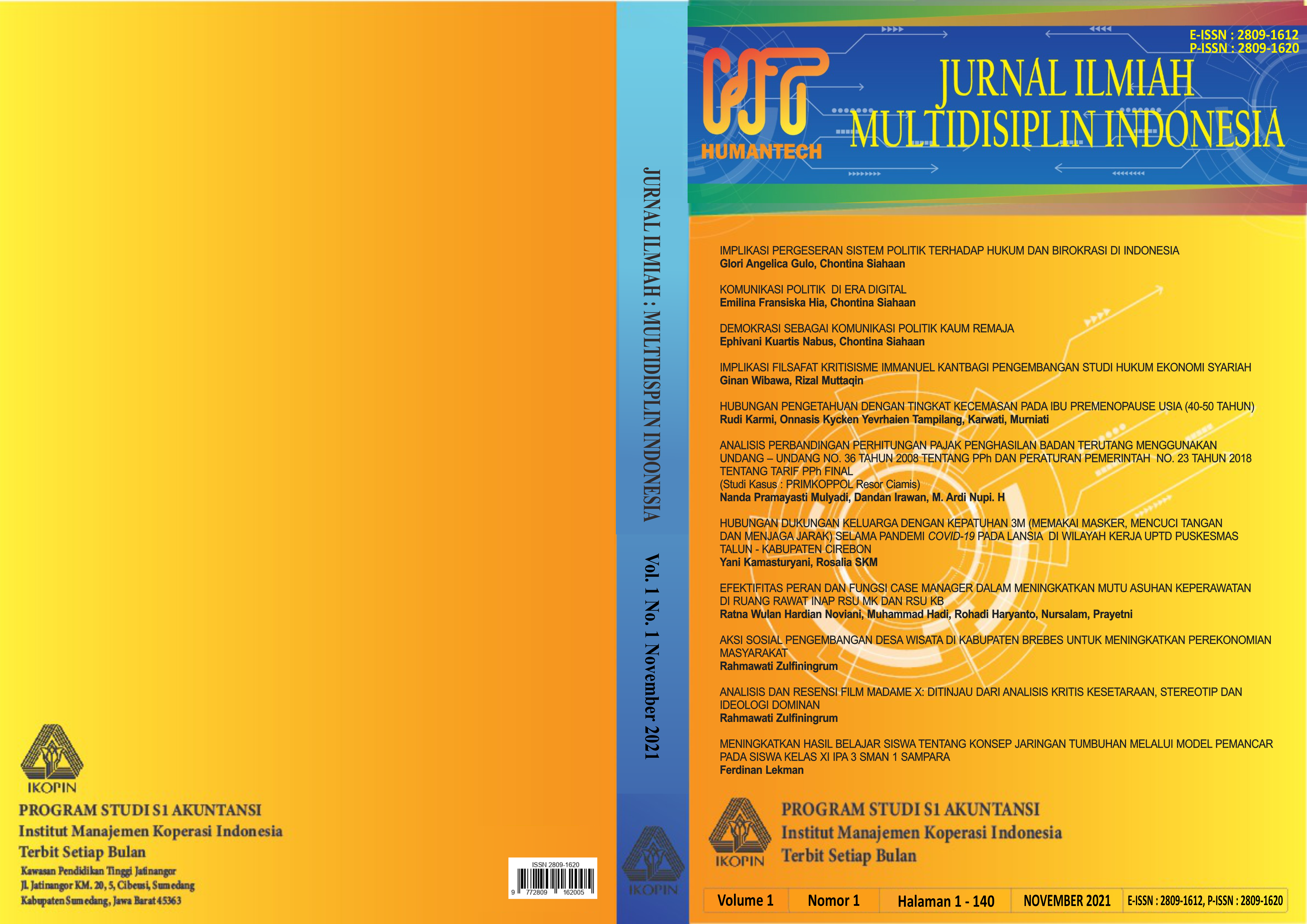ANALISIS DAN RESENSI FILM MADAME X: DITINJAU DARI ANALISIS KRITIS KESETARAAN, STEREOTIP DAN IDEOLOGI DOMINAN
Main Article Content
Abstract
Queer refers to the concept of nomadic identity to oppose those who have a
fixed identity based on a binary sex gender system. The character of the
critical approach in Queer's theory suggests that power relations in society
are very important, especially when a person positions himself or herself in
the face of a marginalized society. Madame X's film reconstructs how
minorities struggle to get their equal rights in society. This study uses a
review method and literature from secondary data. The results of the
analysis show that the situation felt by the transsexual community in Indonesia is represented in this film, including the community's efforts to
achieve equality in society. The category of comedy slapstick as the genre
used in this film actually shows the superiority of heterosexuals over
transsexuals who are considered inferior. The initial mission of equality
for the Queer that "everyone has the right to be happy, including
transsexuals" is actually broken by the humor that is displayed.
Transsexuals are still positioned as a minority, describe discriminatory
treatment, and establish stereotypes negative. The film also has various
social implications which can further support the dominant ideology.
Article Details
References
Anderson, O W & David K. (2001). A Taxonomy for Learning, Teaching and Assessing.
New York: Longman Inc.
Gauter, D. (1988). The Humor of Cartoon. A Pegrige Book. New York.
Gunawati, E., Alamsyah, FF & Jayawinangun, R. (2020). Representasi Gay dalam Film
Moonlight. Jurnal Penelitian Sosial dan Ilmu Komunikasi. 4 (1): 1-9.
Gramsci, Antonio. (1971). Selections form the Prision Notebook. Edited and translated
by Quintin Hoare & Goffrey Nowell Smith. London: Lawrence and Wishart.
Griffin, EM. (2003). A First Look at Communication Theory. Fifth Edition. New York,
McGraw Hill.
Littlejohn WS & Foss AK. (2009). Teori Komunikasi Edisi 9. Jakarta: Salemba
Humanika.
Manser, Juan. (1989). Dictionary of Humor. Los Angeles: Diego and Blanco Publisher
Inc.
Madame X 1. https://www.youtube.com/watch?v=z6Y8gEH8tDY, diunduh pada 24
Mei 2016 Pukul 13.00 WIB.
Neuendorf, KA., Skalski, PD., Jeffres, LW & Atkin D. (2014). Senses of Humor, Media
Use, and Opinions about the Teratment of Marginalized Groups. 1-12.
Pramono. (1983). Karikatur-karikatur 1970-1980. Jakarta: Sinar Harapan.
Rodriguez, AS. (2014). Theoritical Contributions of Peripheral Feminism and Queer
theory to Intercultural Education. Social and Behavioral Sciences. 161, 29-33.
Rumata, Vience Mutiara. (2019). Lesbi, Gay, Biseksual, dan Transgender dalam
Bingkai Kajian Media dan Komunikasi: Sebuah Kajian Literatur Sistematis.
Jurnal Diakom. 2 (2): 176-185.
Setiawan, Arwah. (1990). Teori Humor. Majalah Astaga. 3 (III): 34-35. Jakarta.
Thwaites, T., Davis, L & Mules, W. (2009). Introducing Cultural and Media Studies:
Sebuah Pendekatan Semiotik. Yogyakarta: Jalasutra

